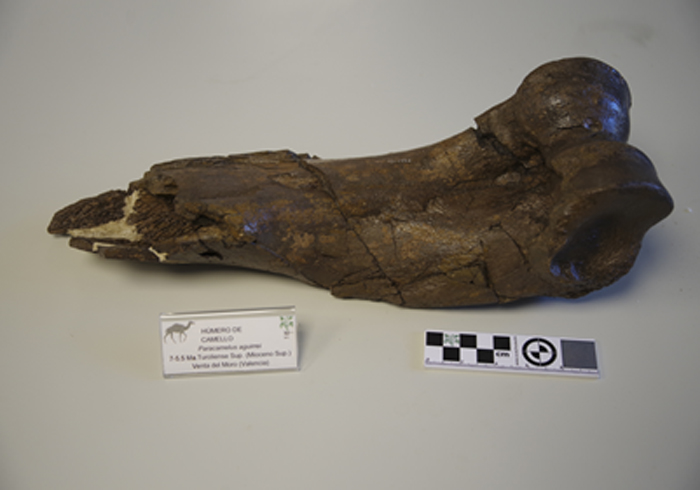This humerus of Paracamelus aguirrei (Morals, 1984) is a piece of great interest whit which we want to pay homage to the paleontologist to whom the species is dedicated, Emiliano Aguirre Enríquez. Director of the Atapuerca excavations, he was one of the first to study the site where this new species was discovered, in the Valencian municipality of Venta del Moro.

The site is one of the most important in Europe due to the variety and excellent conservation of mammals from the Upper Miocene. Most of these fossils correspond to species that could have reached the Iberian Peninsula as a result of the Messinian Crisis (6 million years ago), a geological event in which the Mediterranean dried up. This occurred due to the elevation of the Strait of Gibraltar, which blocked the flow of water from the Atlantic. With this lack of water supply, the Mediterranean became a desert with some scattered small saline lakes.
Discovered in 1969, this site accumulates remains of terrestrial species that reached what is now the Valencian Community. Among these species we can find rhinoceros similar in size to the current ones, hippopotamuses of the Hexaprotodon genusor remains of Anancus arvernensis, a proboscidean similar in size to the current Asian elephants. In addition, we found this humerus of Paracamelus aguirrei, a much larger camel than the current ones, whose genus comes from North America, constituting the oldest camel rest in Eurasia. It is believed that this species could not have a hump because it inhabited steppe environments, so it would not require food reserves, like current camels.

















